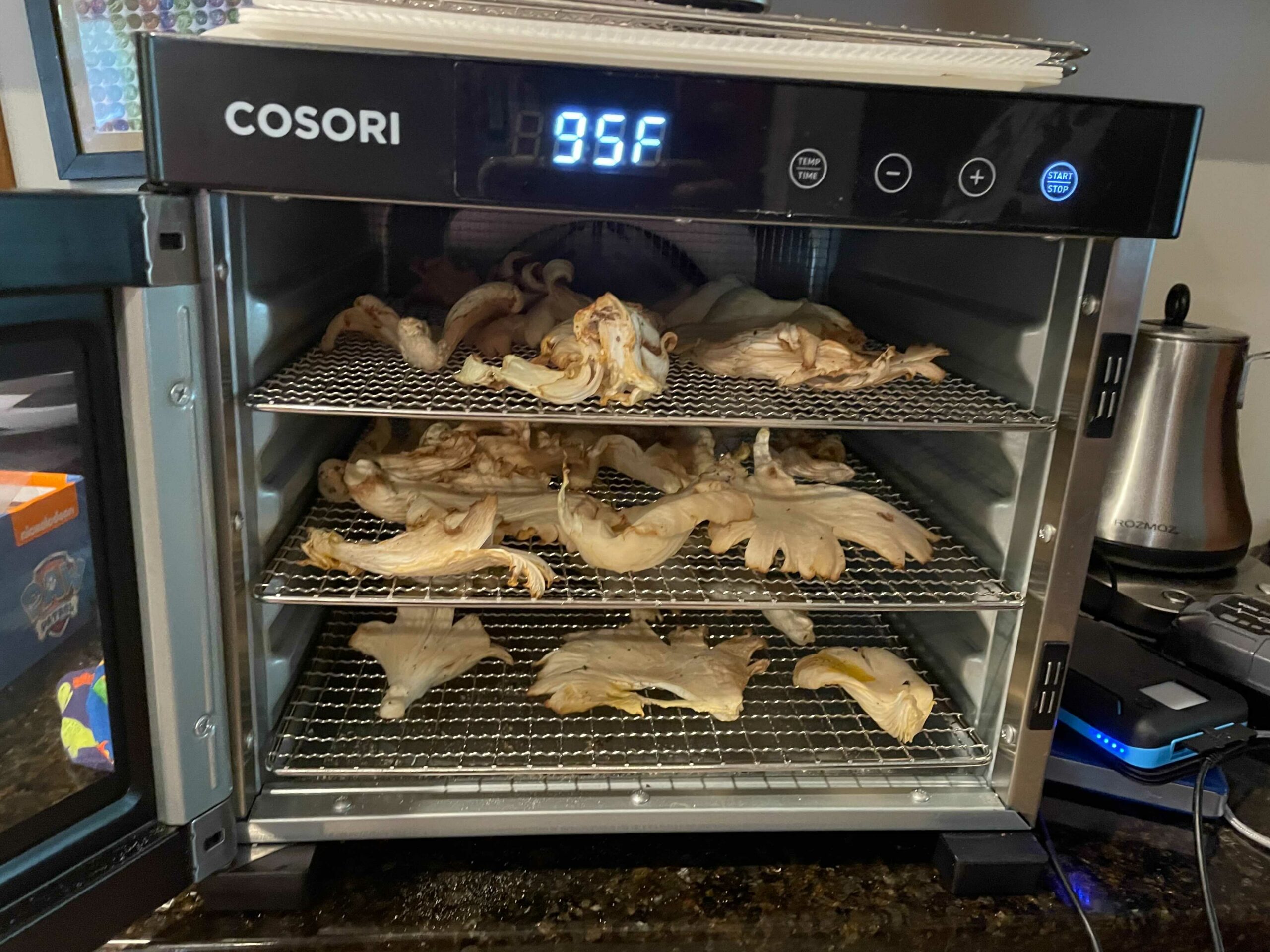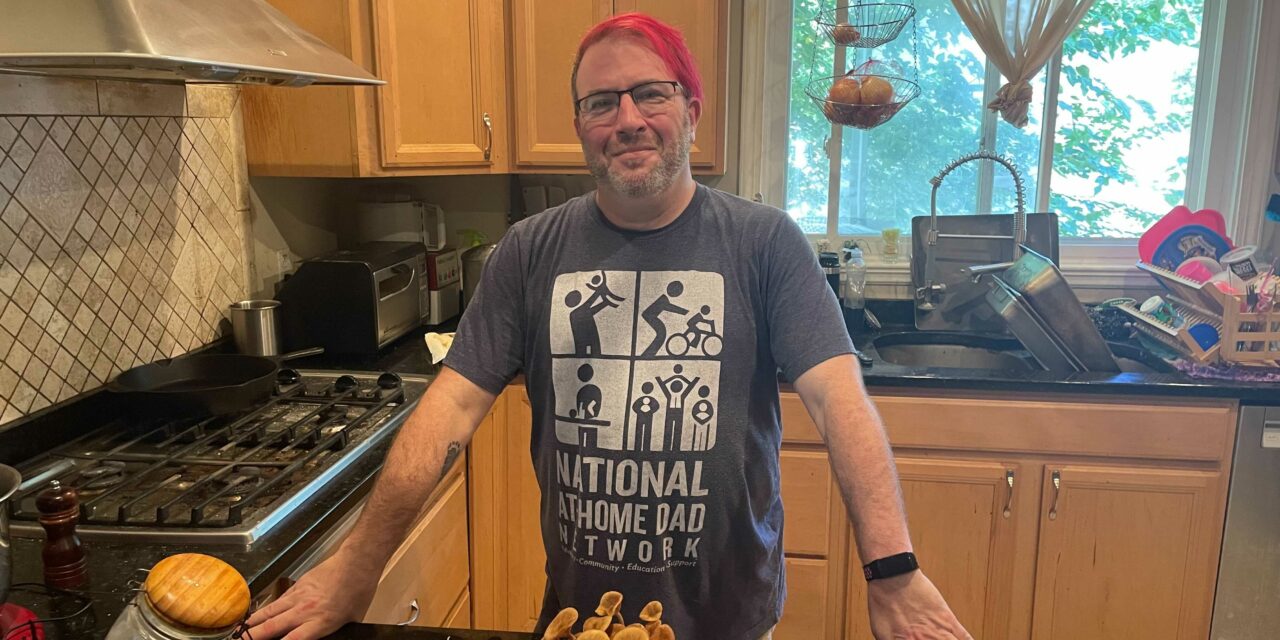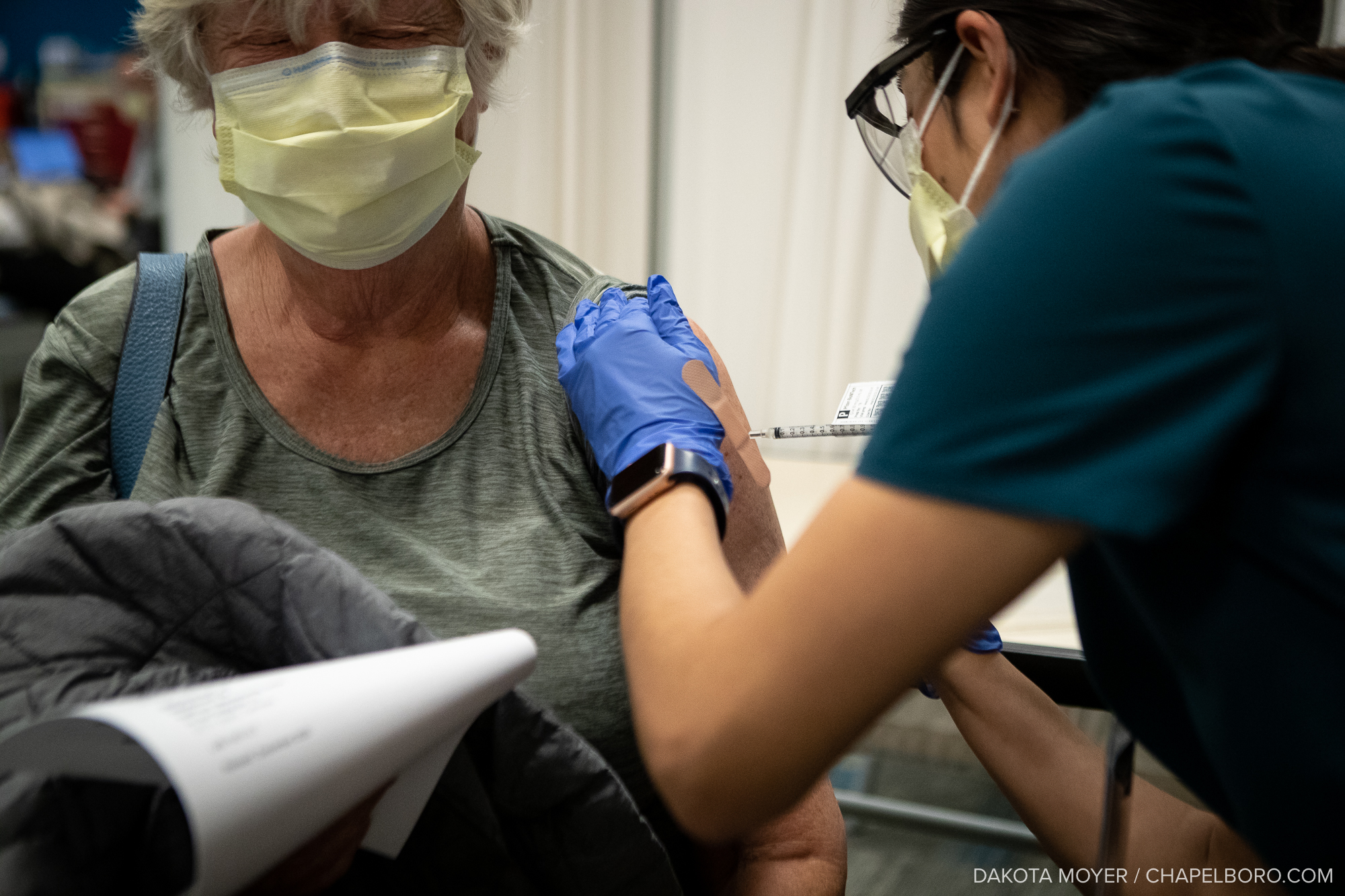While some were holed up in their homes in the early months of the COVID-19 pandemic, others took this as an opportunity to get outside. Some people started foraging for mushrooms – even including them in family dinners.
Matt Strain forages for mushrooms. He stops and scans the old oak trees, digging through some wet dirt and leaves – ensuring he doesn’t leave anything behind.
The ground is still damp from the previous night’s rain – an optimal time for mushrooms to pop up. His finds this afternoon are tonight’s dinner.
He’s not deep in the woods. He’s walking home through his Durham neighborhood where he’s lived the past twelve years. He picks mushrooms on the strip of grass between the road and the sidewalk in front of a brick half century old home in the modest Duke Park neighborhood.
He picked his first mushroom – a bright orange chicken of the woods – in the early months of the COVID-19 pandemic.
“One day we were walking around the neighborhood – literally on the sidewalk,” Strain said. “I’m looking off to the side and I see this mushroom down in the ground and I think to myself, I really think I know what this is.”
Now, he’s hooked. His kitchen countertop is covered with mushrooms. He invested in a food dehydrator to dry out mushrooms for sauces and soups. There are jars of homemade mushroom powder in his pantry.

Strain invested in a food dehydrator to dry out mushrooms for sauces and soups. (Ava Pukatch)
Strain won’t hesitate to step into the woodsy area of his neighborhood between the creek and decaying fallen trees if he spots a find he wants.
“Somebody was walking down the street and kind of looked in the woods and saw me and I looked up and they were kind of giving me a little bit of a strange look,” Strain said. “I said, ‘Hi.’ And they were like, ‘Can I help you?’ And I’m like, ‘Oh no, no, I’m fine. I’m foraging for mushrooms. It’s all good.'”
Strain thoroughly washes his sidewalk finds – especially because of potential exposure to pesticides or dog urine. That’s something Durham County Environmental Health Department General Inspection Supervisor Laura Lerch recommends. She also said it is critical to be 100 percent confident in mushroom picks before eating them.
“They can be poisonous, they can be harmful, cause foodborne illness,” Lerch said. “So it is important that they know how to properly identify those mushrooms.”
Tradd Cotter, who’s foraged for 28 years, said the Carolinas are an optimal location for finding mushrooms year round.
“This is the most fungal diverse area in North America,” Cotter said. “The Appalachian Mountains – they’re old mountains. There’s old trees. Mycorrhizal associates they grow on the roots of living trees. It’s just a very diverse, rich area for mushrooms, and the climate is very conducive to a lot of many different species.”
Cotter is the cofounder of Mushroom Mountain – an FDA recommended course for mushroom certification. He also serves on the board of the North American Mycological Association as a toxicology identifier.
Cotter said learning to forage is similar to learning a foreign language – except mushroom identification could lead to potential poison or death if done incorrectly. He said it’s an honor to take calls about emergency toxins to help problem solve.
“Mostly people who are unskilled you know they make mistake,” Cotter said.
To avoid potential sickness or a call to Cotter, Strain chooses to only pick mushrooms he knows. He does not yet have the same experience as Cotter, but he’s continuing to learn. He said it’s kind of like catching Pokemon.
“Every time you find a new mushroom, you’re like, Ooh, look, I found something,” Strain said. “It’s just fun to add a new mushroom to the list of the ones that you can look at and go, I know what that is.”
Strain’s next conquest: black trumpets and morels.
This story was originally posted on UNC Media Hub
Chapelboro.com does not charge subscription fees. You can support local journalism and our mission to serve the community. Contribute today – every single dollar matters.










